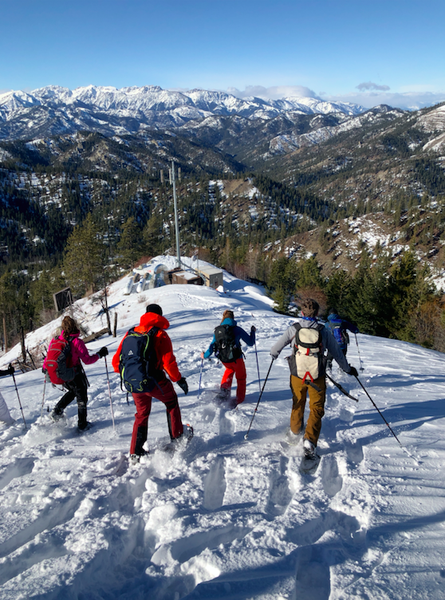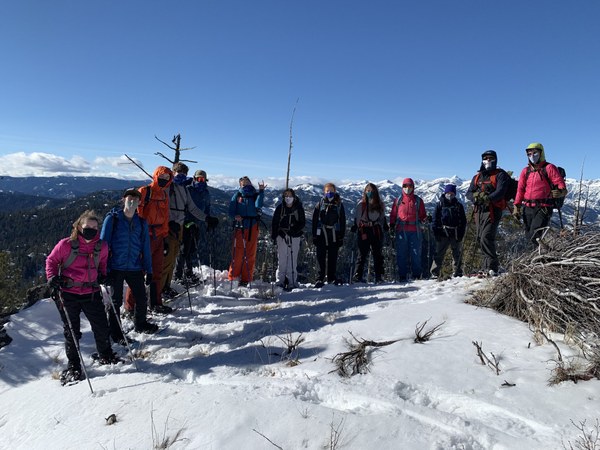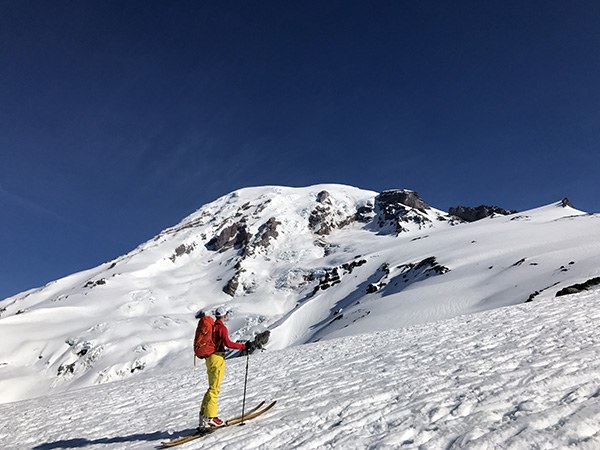
It was a cold February night in 2018. Snowflakes pummeled the windshield as we drove down the empty highway, the darkness pierced only by our headlights. We were both silent on our way to Alpental at Snoqualmie Pass. Feelings of dread, horror, and hope flashed through my mind at lightning speed. I ran through every possible scenario as I tried to make sense of what might lie ahead.
Earlier that day, Matti and I had been skiing at Crystal Mountain, enjoying turns in the beautiful powder with our teenage children. Always responsible, Matti’s oldest son Niko texted his plans for the day in our native Finnish: “Me mennään treenille Alpentaaliin.” “We’ll go do some training at Alpental.”
Just 18 years old, Niko Suokko was an outdoor enthusiast with countless hobbies: skiing, hiking, running, soccer, riding snowmobiles and motorcycles, and more. He began riding snowmobiles as an eager 10-year old boy, looking up to his father and developing a passion for backcountry motorsports. They would often dive into projects together, getting their hands dirty with everything from old motorcycles to cars.
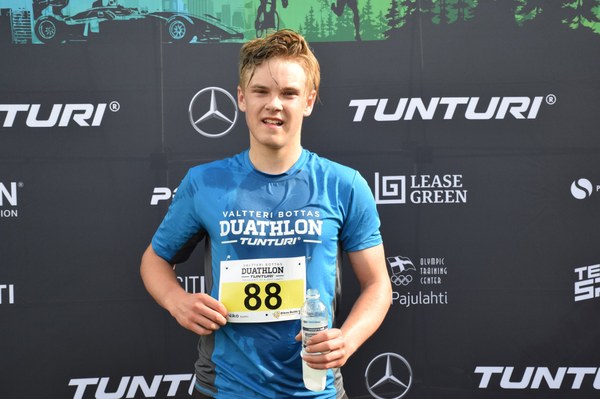 Niko after competing in an off-road duathlon in Finland. Photo by Matti Suokko.
Niko after competing in an off-road duathlon in Finland. Photo by Matti Suokko.
Niko’s curiosity and high-spiritedness often led him to new adventures. He would surprise family and friends with new challenges he had taken on, like the time he arranged to be a ski instructor at Snoqualmie. At 16, he participated in a half-marathon without any dedicated training, earning fourteenth place in the men’s division out of 250 competitors. At 17, he took part in an off-road duathlon while visiting family in Finland, hopping on a bike he’d never ridden before the competition. He was also a surprisingly gentle soul, spending his less adrenaline-fueled moments writing, painting, and caring for his friends and younger siblings. His desire to be active was not driven by a need to impress others, but instead stemmed from the pure joy of experiencing something new. He was brimming with life, competitive and determined, with the potential to achieve anything he put his focus on.
He also had a surprise waiting for him. Niko had received a letter of acceptance into Finland’s army’s special forces, the paratroopers, for his mandatory military service as a Finnish citizen. Only the toughest and the most talented individuals gain a spot in the program. He was going to be elated.
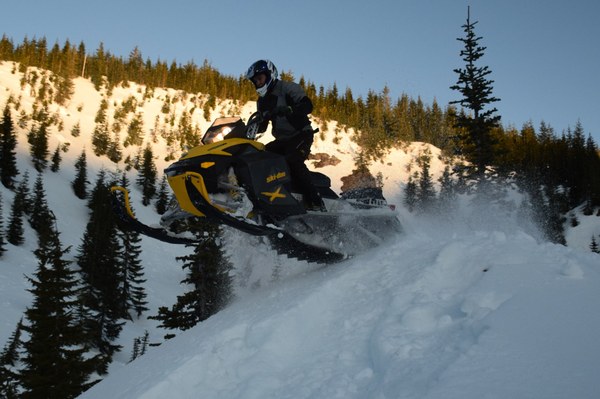 Niko catching air near Stampede Pass. Photo by Matti Suokko.
Niko catching air near Stampede Pass. Photo by Matti Suokko.
On the mountain
But that day on the mountain, Niko’s text triggered an uneasy feeling. His father Matti and I knew how unstable the snow conditions were that weekend. I had been in the Alpental valley the week before with an experienced group of Mountaineers practicing advanced crevasse rescue. I remembered the mixed feelings I had hearing the faint echo of a child joyfully shouting, playing near the summer trail to Snow Lake in what I knew was a perfect avalanche chute. They were on the opposite side of the valley from us, and I wished we had a way to tell the adult it was not safe. They may have seen a path traveled by other hikers and snowshoers in days past, following without any idea of the lurking dangers.
My concern returned as Matti was messaging his son, telling him not to go into the backcountry that day. Niko promptly responded to his dad: “We won’t go anywhere dangerous.” He was known to be reliable. Relieved that Niko agreed to be cautious, we continued enjoying the beautiful powder day.
On the drive back from Crystal, we talked about dinner plans and tried to connect with Niko to find out when he’d be back. He was not responding in his usual, punctual way. What was going on? Feelings of irritation developed. Was he being thoughtless? Perhaps his phone had died, and he was having too much fun with his friend to notice? As time wore on without any contact, worry started to rapidly creep in. The ski slopes were closed and there had been plenty of time for the boys to return to town. After numerous attempts to contact Niko and several of his friends, we didn’t know what to do except to drive to Alpental.
After a long, silent trip, we turned off the highway. The night was pitch black, and all we could see in our headlights were faint tire tracks surrounded by massive snowbanks. Snow was already covering the traces of the day’s busy winter traffic. I tried to stay positive, but my heart and mind were racing. The short road from the highway up to the trailhead seemed to take forever.
Suddenly my heart sank. We arrived at the end of the road and our headlights revealed a nightmare. There it was: Niko’s black car standing alone covered in snow, next to the backcountry ski trailhead. This gut-wrenching image still remains crystal-clear in my mind today. It was a terrible sign.
In that moment, the worst-case scenario became a possibility. Were the boys lost or injured somewhere, unable to move? Huddled in a snow cave or under a tree, waiting for first light? They had all the experience and knowledge needed to survive in an alpine environment. Niko had taken an AIARE I class with us the year before and had years of winter experience from his outings, including many snow camping trips. He wasn’t prone to panic and had all the endurance you would expect from a young athlete. We rushed out of the car and onto the start of the trail, yelling into the dark void. We couldn’t see any tracks. We listened closely, hoping to hear something back. But there was nothing. The darkness did not respond - heavy snow muffled everything. It was eerily quiet. It was so tempting to run up the trail and start looking for the boys, regardless of the avalanche danger we knew was there. The feeling of helplessness was overwhelming.
We called 911 and reported them missing. King County Sheriff’s Office and Seattle Mountain Rescue (SMR) were quickly alerted. Niko’s car didn’t give us any more clues on their whereabouts. We were eventually able to reach the other boy’s parents, who soon arrived at the scene. They were able to locate the last ping from their son’s phone on their phone screen. I looked at the map in terror. I knew that place. Their last known location was at the bottom of a slope, bare of trees and steep enough to slide. I forced myself to remain calm and not to generate more panic. In my heart I truly feared the worst, and hoped for a miracle.
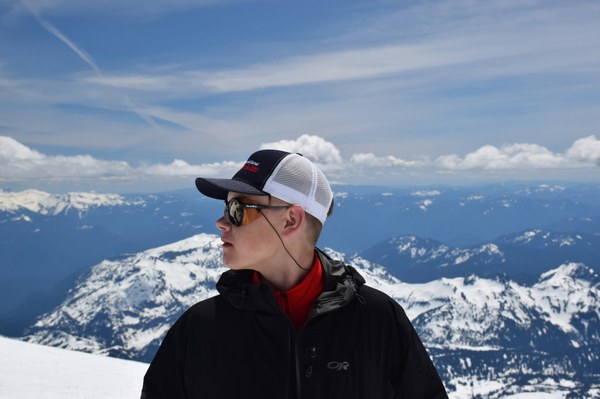 Niko at Camp Muir before skiing down to Paradise. Photo by Matti Suokko.
Niko at Camp Muir before skiing down to Paradise. Photo by Matti Suokko.
Search and rescue
Emergency officials and SMR teams arrived at the scene. They had just been recovering an avalanche victim, a snowmobiler who lost his life not far from where we were. You could see the heaviness in their hearts as they assessed the situation. It was still snowing, and the avalanche danger was high.
The Northwest Avalanche Center (NWAC)’s forecast for that day stated: “Travel in avalanche terrain is not recommended as very dangerous avalanche conditions exist. Expect widespread avalanches big enough to bury or kill you. Only travel in the backcountry today if you are certain that you can avoid avalanche terrain.”
The search mission was put on hold until first light due to the perilous conditions. It was agonizing to know that two children were in the cold and dark, potentially hurt, with no way to help them. But there was nothing we could do, except wait and return the next day.
Time stood still that night. Each hour felt like an eternity as we waited for dawn to come. Anger and despair dominated our minds as we poured over all of the information we had, and what we didn’t. Why did the boys enter that area? Were they still there? Were they injured?
We returned to the trailhead long before sunrise. We had to be there, even if all it meant was waiting in the car for the search party to arrive. At first light the empty parking lot turned into a hard-working village, complete with a search and rescue mission control center, numerous vehicles, and dozens of people preparing gear and reviewing plans. The search mission had to be carefully designed as the snow conditions were still highly dangerous, making the mission extremely challenging. The teams we had the privilege of witnessing that day were comprised mostly of volunteers. They accepted the challenge and put their hearts and souls into the search.
Four rescue teams including Seattle Mountain Rescue, King County Explorer Search and Rescue, and the Ski Patrol Avalanche Rescue Team departed from the parking lot and headed towards the area indicated by the last ping from Niko’s friend’s phone. We were all holding our breath in the parking lot as we waited for news. Finally, the search director got the call from the rescue crew. His face told us all we needed to know.
The recovery
Two avalanche beacon signals were located by the rescue teams. Both beacons were emitting signals from beneath a horrendous pile of avalanche debris, runout below a large, soft slab avalanche, with a fracture width of 350 feet and a vertical fall of 500 feet. The two beacons had been sending the signal since the day before without anybody around to hear.
Until that point we had clung to a shred of hope that one or both of the boys could be recovered alive. It was only when their bodies were slowly tugged from the snow that this hope finally extinguished. The unthinkable had happened. They were gone.
The rescue team was forced to temporarily pull back in the middle of the mission when another avalanche released naturally and ran within 100 feet of the incident site. More avalanche guards were assigned, and the rescue personnel were reduced to limit exposure. It took a tremendous effort from the rescuers to retrieve the boys’ bodies under such unstable snow conditions. The parking lot was filled with despair and horror as we watched the bodies returned in sleds, pulled by exhausted and somber rescuers.
The aftermath
Two families lost sons, big brothers, grandsons, and cousins that day. Two great friends were gone, and many young adults lost their feelings of innocence and invincibility as well. We said goodbye to two beautiful young men's futures - all of their dreams, desires, and adventures were no longer possible. All that was left on the day of the accident were two avalanche beacons calling out under a dark mass of snow.
In the days that followed, we all went into survival mode. The despairing, bitter emotions were intensified by the many different people affected by the boys’ deaths. To me, it felt similar to being on a treacherous glacier with a team you’ve never climbed with, when suddenly one of the members falls into a crevasse. All the tools that would usually be present – appropriate equipment, training, and finely-honed team dynamics – haven’t had a chance to be established. For a challenging mountain expedition, you wouldn’t usually choose such a combination. But life doesn’t work that way. When crisis strikes, you have no choice but to adapt and do your best to survive.
Within the nightmare, rays of light broke through the storm clouds. Friends stepped up to prepare meals and help with the other children. The impacted schools provided access to counselors to help students cope. A river of flowers and kind notes came streaming in.
Niko’s life clearly called for a celebration, not a funeral. His celebration of life and its arrangements, though very painful, were therapeutic. His relatives from Finland shared pictures and stories from his childhood summers spent with them. Niko’s teachers and school friends shared stories showcasing his academic talent, his tendency to always help others, and a few teenage shenanigans. Parents seldom get to hear how good of a friend their child was. Though those stories and discoveries were bittersweet, my heart was humbled to see how big of an impact he had made in so many lives. I wish we didn’t need such tragic times to share our feelings.
The NIKO Program
Niko’s dad Matti and I were determined to make something good come out of this tragedy. Soon after Niko’s accident, we realized the depth of the gap in avalanche education for teens. Most avalanche education programs are developed for adult audiences and do not consider the known differences between adolescent and adult information processing and educational needs. In collaboration with NWAC, we founded the NIKO18.LIFE memorial fund to carry Niko’s legacy forward, with the goal of developing an entirely new approach to youth avalanche education. Supported by the NIKO18.LIFE memorial fund and NWAC, we were able to make this a reality and created the NIKO Program. We are forever grateful to our donors, who allowed us to develop a completely new resource for youth to enjoy the winter backcountry more safely.
MAC students exploring during their NIKO Program field day at Blewett Pass. Photo by Carl Marrs.
Curriculum
Creating the NIKO Program’s curriculum required a remarkable group effort from experts in youth education, adolescent brain development, avalanche/snow science, and risk management. From ages 14-24, the brain functions differently than it does during childhood or adulthood. Notably for our purposes, risk management is more challenging during that time. Though crucial for the development of independence, this biological difference has its drawbacks. The NIKO Program helps students understand these challenges and hopefully develop greater caution through this increased awareness.
Focusing on late middle school and high school students, the program operates over five weeks to give students enough time to fully digest the material, reflect, and incorporate the information into habits. The lessons include topics like human factors and hazards, avalanche terrain, mapping, weather, and team dynamics. Students work through guided exercises while practicing critical thinking, decision-making, and open communication within a team.
The program is designed to use active learning methods and principles rather than one-way lecturing. Students actively solve problems and engage in purposeful discussions on group dynamics, risk evaluation, and more, while building leadership skills and risk management techniques. Students also practice winter backcountry travel skills and techniques during a full-day field outing. The NIKO Program's education sits somewhere between an avalanche awareness course and AIARE I. The curriculum provides students with a base understanding of what someone needs to know to stay away from avalanche terrain, and what additional education is needed before entering avalanche terrain.
Piloted and ongoing programs
The NIKO Program was first piloted in the winter of 2019/2020 with the Mountaineers Adventure Club (MAC) in Seattle. Following the successful pilot, we expanded the program delivery to five different locations in the 2020/2021 winter season. Though we had to adapt the way courses were held due to COVID-19 concerns, over 60 young students “graduated” from the NIKO Program, including three different Mountaineers groups.
MAC students after their NIKO Program field day at Blewett Pass. Photo by Carl Marrs.
For the 2021/2022 season, we are providing a program that adapts to different student groups and course providers in addition to COVID-19 safety. We are especially excited to collaborate again with MAC and the Gateway Mountain Center in Truckee, California, with several other potential partner organizations on the horizon.
Learning to recreate safely in the mountains goes far beyond receiving a certification. It’s a lifelong journey, offering an opportunity to learn more regardless of your level of knowledge and experience. Parents and friends helping teens to become better team members in everyday life. A community coming together to form a safe place for youth to be curious, openly ask questions, and develop. Regardless of whether you’re an expert and hopeful mentor or a first-timer in the world of winter recreation, we’d like to welcome you to the NIKO Program community for a lifetime of learning, sharing, and living life to the fullest.
Get involved
- For more information on the NIKO Program or to make a gift of support, visit nikofoundation.org.
- For NIKO Program provider opportunities, contact Outi Villet at outi@nikofoundation.org.
This article originally appeared in our Winter 2022 issue of Mountaineer Magazine. To view the original article in magazine form and read more stories from our publication, visit our magazine archive.
 Outi Villet
Outi Villet
